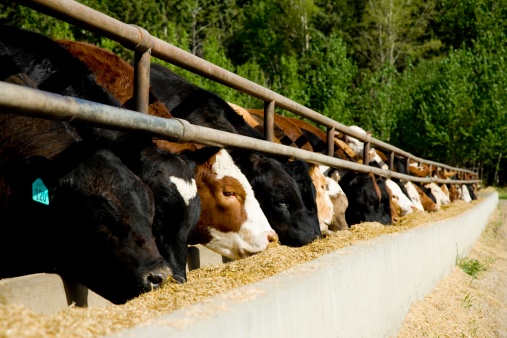
The likelihood that grocery store prices will follow the commodity prices down, though, is reasonably remote. For one thing, retail prices do not change as fast for food as they do with other commodities like gasoline. For another, the big increases in retail food prices have come in beef, pork, chicken and fresh fruits and vegetables, not in grains.
Meat prices are not likely to fall much in the near term as pork producers continue to battle a bacterial disease that is killing piglets and beef producers try to build up the herds they culled a couple of years ago when beef prices were low. Prices for chicken have risen as consumers look for ways to reduce their grocery bill by buying lower priced poultry, driving up demand for chicken and raising prices.
The most significant driver of higher food prices is the continuing drought in California, which produces nearly half of all U.S. fresh fruits and vegetables. The state also produces a significant portion of the nation’s beef and eggs. Prices for fresh fruits and vegetables could rise by 3% this year, with beef rising 6% and eggs up 5% due to the drought. Rice could rise as much as 20%, according to one estimate.
Higher fuel prices also figure into the rising cost of food, to say nothing of the impact of higher gasoline prices on consumer budgets. Some relief from rising gas prices may be on the way, however. The national average price per gallon has fallen nearly three cents in the past week, though it still remains about 17 cents a gallon higher than it was a year ago.
ALSO READ: Ten States With the Slowest Growing Economies
100 Million Americans Are Missing This Crucial Retirement Tool
The thought of burdening your family with a financial disaster is most Americans’ nightmare. However, recent studies show that over 100 million Americans still don’t have proper life insurance in the event they pass away.
Life insurance can bring peace of mind – ensuring your loved ones are safeguarded against unforeseen expenses and debts. With premiums often lower than expected and a variety of plans tailored to different life stages and health conditions, securing a policy is more accessible than ever.
A quick, no-obligation quote can provide valuable insight into what’s available and what might best suit your family’s needs. Life insurance is a simple step you can take today to help secure peace of mind for your loved ones tomorrow.
Click here to learn how to get a quote in just a few minutes.
Thank you for reading! Have some feedback for us?
Contact the 24/7 Wall St. editorial team.


